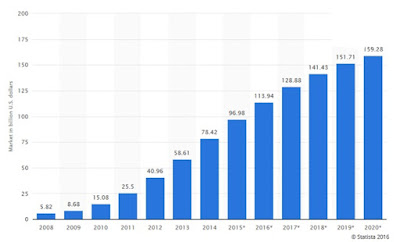Twitter Feed
DISA Chief Technologist States Plan for Cloud
In an interview reported on in this month’s Military Information Technology magazine, David Mihelcic, DISA Chief Technology Officer, has laid out his goal for the agency’s cloud computing initiative. As…
Google, GeoEye, Twitter. What a Combination!
On September 9th, Bob Lozano posted his kudos to GeoEye for a successful launch of GeoEye-1. (Hey Bob! Where’s that post on your “cloud failure” last week?) According to their…
RightScale goes Transcloud
Over the weekend, Maureen O’Gara of SYS-CON media reported that RightScale is now offering a “first in industry” capability to provide application management across multiple cloud infrastructures. It now offers…
A Bill to Outlaw Cloud Computing…..
… is what we may see if we don’t educate our lawmakers now! That seemed to be one of the main point at last week’s Google workshop in DC. Berin…
Military Information Technology Cloud Computing Collaboration
Today, we’re happy to announce what we believe to be an industry first. “Military Information Technology Magazine“, as the publication of record for the defense information technology community, is collaborating…
Is 99.999% reliability good enough?
According to Reuven Cohen in his recent post, Cloud Failure: The Myth of Nines , the whole concept of reliability may be meaningless. “In the case of a physical failure…
You Probably Use Cloud Computing Already.
56% of internet users use webmail services such as Hotmail, Gmail, or Yahoo! Mail. 34% store personal photos online. 29% use online applications such as Google Documents or Adobe Photoshop…
20 Real-Life Challenges of Cloud Computing
Nikita Ivanov of GridGain offers some excellent insight into the nuts and bolts of getting the cloud to work. Definitely worth a read. To summarize: Most likely you do NOT…
3Tera Announces Global Cloud Services
Last week, 3Tera has announced the availability of global cloud services, based on their AppLogic grid operating system. 3Tera is currently running data centers in seven countries (United States, Japan,…
- Enable cloud service arbitrage based on cost, performance or operational need;
- Help companies migrate operations to the cloud and assist with staff augmentation and training;
- Provide cloud service auditing and SLA monitoring services;
- Help in focusing and managing organizational cloud service demand;
- Provided toolsets to assist in the migration and integration of enterprise applications; and
- Help in change management and the selection and integration of other managed services.
By automating and operationalizing the governance of cloud services, CSBs can efficiently multi-source services and augment them with third party metering and monitoring. Using CSBs, organizations also accelerate their transition to hybrid IT models. This marketplace is typically segmented type of services: cloud brokerage and cloud brokerage enablement, wherein cloud brokerage enablement is further segmented into internal and external brokers. When used internally, cloud enablement platforms helps enterprises adopt the new hybrid IT and multi-sourced operating model. By building organic expertise, companies can personalize IT service consumption and unify
IT service delivery through the use of a corporate self-service store, a dynamic service marketplace, and continuous delivery. This centralized, supply chain approach unifies the order, execution, and management of multi-sourced solutions across legacy and cloud resources, by centrally delegating and tracking execution.
(This post was brought to you by IBM Global Technology Services. For more content like this, visit Point B and Beyond.)
( Thank you. If you enjoyed this article, get free updates by email or RSS – © Copyright Kevin L. Jackson 2016)
Cloud Computing
- CPUcoin Expands CPU/GPU Power Sharing with Cudo Ventures Enterprise Network Partnership
- CPUcoin Expands CPU/GPU Power Sharing with Cudo Ventures Enterprise Network Partnership
- Route1 Announces Q2 2019 Financial Results
- CPUcoin Expands CPU/GPU Power Sharing with Cudo Ventures Enterprise Network Partnership
- ChannelAdvisor to Present at the D.A. Davidson 18th Annual Technology Conference
Cybersecurity
- Route1 Announces Q2 2019 Financial Results
- FIRST US BANCSHARES, INC. DECLARES CASH DIVIDEND
- Business Continuity Management Planning Solution Market is Expected to Grow ~ US$ 1.6 Bn by the end of 2029 - PMR
- Atos delivers Quantum-Learning-as-a-Service to Xofia to enable artificial intelligence solutions
- New Ares IoT Botnet discovered on Android OS based Set-Top Boxes



